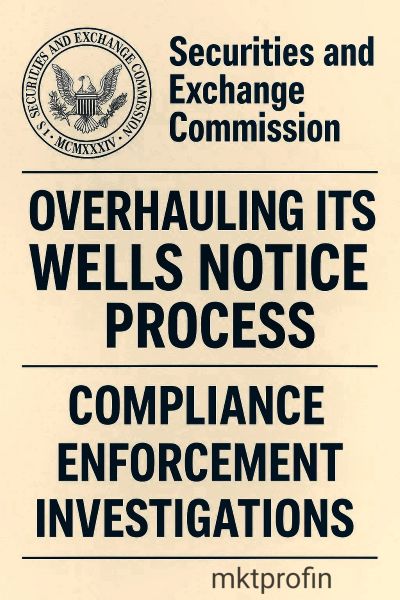The SEC, Wells Notice, compliance, enforcement, and investigations. Five words that strike fear into legal teams that thought “it’s only a technical issue” was a winning defense strategy. Sorry. Not anymore.
The SEC has decided it’s done with firms pretending they’re shocked when a regulator shows up asking questions. The agency is tightening its Wells Notice process so you can’t drag out responses, hand-wave problems, or slap a “technical issue” sticker on behavior that looks far more intentional.
You can not ignore a Wells letter from a gym you have not joined because of this shift. Now, early engagement is important. Quick reactions. genuine justifications. Reduce the amount of bluffing. More details. After years of “watching the situation,” legal and compliance professionals need to take action immediately. Sharper documentation is required. improved administration. A true oversight. Before you are found breaking the laws again, the SEC wants to make sure you understand them. The good natured pre-enforcement dialogue is done. Wells meetings will resemble the practice run for an enforcement action you do not want to make headlines, rather than a friendly conversation.
If your policy for handling regulatory inquiries is a folder labeled “misc,” you’re already behind. Get your playbook in order. Train your people. Know your weak spots. Because the message from Washington is clear.
Talk early. Or pay later.
Key Takeaways
- Firms’ capacity to postpone responses is being curtailed by the SEC’s more stringent Wells Notice procedure.
- Businesses can no longer dismiss problems as trivial; this change calls for sincere participation and prompt responses.
- Legal teams must improve documentation and administration to avoid further enforcement actions.
- It is no longer an option to ignore a Wells letter; proactive involvement is essential to compliance.
- The SEC emphasizes early communication to prevent costly repercussions later.


